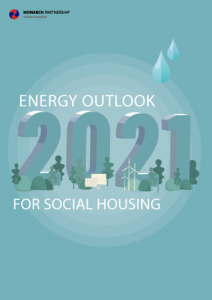Monarch explores the viability and benefits of flexible energy tariffs in the wake of lockdown and how flexible contracts can free you to react dynamically to market change.
The oak and the reed
During and in the immediate aftermath of the COVID-19 lockdown, the energy market has demonstrated that adaptability is king. As the complex and fragile supply chains of fossil fuel slowly collapsed under the weight of shrinking demand and a diminished labour force, renewables stepped into the spotlight – as did the temptation of flexible energy tariffs.
April saw the price of US oil turn negative for the first time in history with West Texas Intermediate, the standard for US oil, plummeting to – $37.63 per barrel. As a result drillers were literally paying consumers to take the former black gold off their hands to avoid incurring storage costs.
‘A tree that is unbending is easily broken’
-Tao Te Ching, Chinese philosophical treatise
Of course the loss of one is often the gain of another, if that other is well-positioned beforehand to take advantage of such a shift in market influence. The unique situation of oil becoming a buyer’s market meant that firms with flexible tariffs were able to maximise their savings as a result of market volatility and not miss the opportunities that lockdown presented.
However given the inherent risk/reward nature of market speculation, it bears stating the various benefits of both fixed and flexible procurement contracts before comparing these to future market projections.
Tariffs: fixed vs flexible
Gauging the respective benefits of these contracts requires a fundamental understanding of the individual benefits and limitations of each.
Fixed contracts guarantee stability despite market changes and accuracy in regards to budget projections, so long as consumption remains within contractual boundaries.
Usually lasting 1-3 years, which – depending on market movements – may seem either a safe port in a storm or a gated harbour blocking the open sea.
On the other hand, a flexible contract affords the freedom to respond to market changes in real time and potentially yield massive savings if prices drop.
Clients are able to fix, trade or sell energy in order to displace the risks of purchasing, allaying concerns around the reverse possibility of prices rising unexpectedly.
However even fixed contracts can incur unexpected costs, usually as a result of increased levies or taxation but also from third party expenses like transportation.
Generally, suppliers will anticipate fluctuations to a reasonable degree by factoring their likelihood into the price they offer. It bears mentioning, however, that third party costs have been steadily increasing for years.
A fluid future
As lockdown draws to a close, it can be expected that oil and gas interests will bounce back temporarily thanks to pre-existing infrastructure, buyer habits and the investment they represent.
However, with G20 leaders pledging to invest $5tn in green industry and job creation following the COVID-19 pandemic, it seems that the days of fixed energy prices are numbered.
The reason for this is that due to the unprecedented market upheaval that the planet’s shift to green energy will initiate, we will experience a relative free for all in energy valuation for decades to come.
Additionally, the nature of renewable energy sources has the potential to provoke a total paradigm shift. The scarcity that dictates the supply, and subsequent valuation, of hydrocarbons simply does not exist in the context of wind and solar power. Moreover, renewable energy sources are not nearly as restricted by location.
While hotter and sunnier locales and offshore farms are obviously richer sources of solar and wind, those resources still exist in some capacity everywhere on Earth. The same can be said, albeit to a lesser degree, of other renewable sources including geothermal, hydroelectric and tidal power.

It follows, then, that firms which are willing to engage in proportionately higher risk, at the cost of budget security, may gain hugely from playing the market in years to come.
Monarch’s trading desk constantly tracks market fluctuations to better position its clients to take advantage of price changes. Its operations rest on a solid foundation of over thirty year of industry experience, serving 75,000 different sites annually. To subscribe to our weekly energy market insights report click here.
The diversity of these sites, ranging from housing associations to education institutions to corporate facilities. Monarchs multi-faceted understanding of energy markets means procurement solutions can be found within a variety of contexts.
Marrying this service with Monarch’s Smart Asset Management solution, affords a robust understanding of existing costs. This, in turn, highlights any potential improvements leading to more accurate budgeting, based on the age, location and consumption patterns of specific assets.
Of course, housing associations wanting to take full advantage of a changing energy market will almost certainly need to undergo section 20 dispensation. Fortunately Monarch not only consults regularly on this process, but is also hosting a webinar on Tuesday 21st of July to shed some light on it.
The Monarch solutions page contains full details of the company’s offering with regards to both asset management and procurement solutions.















